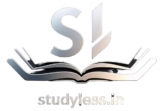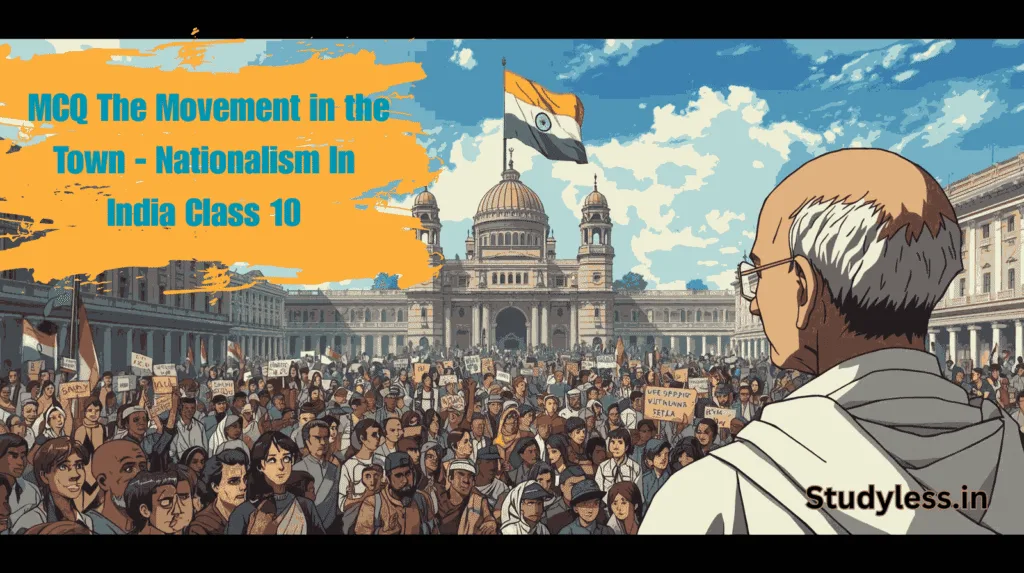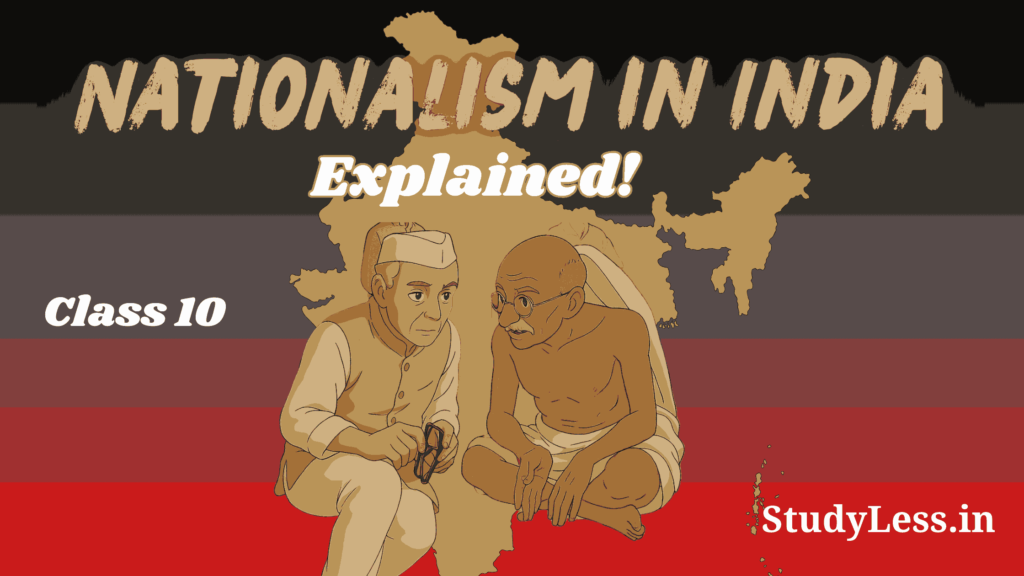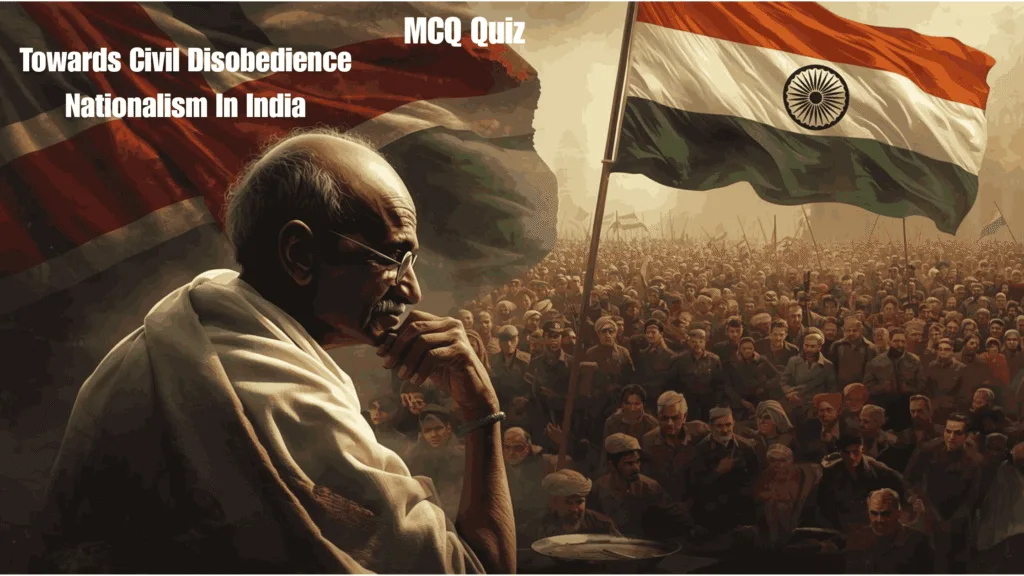Hey there! If you’re studying political parties for your Class 10 CBSE exam, you’ve come to the right place. These MCQs on Political Parties Class 10 CBSE will help you get a clear and simple understanding of how political parties work, the challenges they face, and why they’re so important in our democracy.
From leadership and internal democracy to election laws and party reforms, these MCQs On Political Parties Class 10 questions cover it all. Whether you’re prepping for exams or just curious about politics, this set of MCQs will make learning easy and interesting. Let’s dive in and boost your confidence!
Table of Contents : MCQs On Political Parties Class 10
MCQs On Political Parties Class 10 Block 1: MCQs 1–25
- Political parties are one of the most visible institutions in a democracy. For most ordinary citizens, democracy is often considered equal to what?
a) The Constitution
b) The nature of government
c) Political parties
d) Remote parts of the country - While political parties are highly visible, this visibility does not necessarily mean what?
a) They are effective
b) They are popular
c) They contest elections
d) They form governments - About a hundred years ago, how common were political parties in the world?
a) They were omnipresent
b) There were few countries that had any
c) They were common in most democracies
d) Only one-party systems existed - Why did political parties become so omnipresent in democracies all over the world?
a) Because they are very popular
b) Because they are easily visible
c) Because they are very necessary for democracy
d) none of the above - According to the source, what is a political party?
a) A group of leaders
b) A group of people who criticise the government
c) A group of people who come together to contest elections and hold power in the government
d) A group of people who agree on everything - What is the main purpose of the policies and programmes agreed upon by a political party?
a) To create social and political divisions
b) To ensure all citizens have the same views
c) To promote the collective good
d) To support criminals - How do political parties typically seek to implement their policies?
a) By forcing people to agree with them
b) By criticising the government
c) By winning popular support through elections
d) By debating laws in the legislature - Parties reflect fundamental political divisions in a society. What term is used to describe a person who is strongly committed to a party, group, or faction?
a) Follower
b) Leader
c) Partisan
d) Activist - Which of the following is NOT listed as a component of a political party in the source?
a) The leaders
b) The media
c) The active members
d) The followers - What is the basic function that political parties perform regarding political offices and power?
a) They criticise the government
b) They shape public opinion
c) They fill political offices and exercise political power
d) They provide access to government machinery - In most democracies, elections are primarily fought among which group?
a) Independent candidates
b) Pressure groups
c) Candidates put up by political parties
d) Government officers - How do political parties in India select their candidates for contesting elections, according to the source?
a) Members and supporters choose
b) An independent authority chooses
c) Top party leaders choose
d) State funding determines selection - How do parties handle the large variety of views present in a society regarding suitable policies?
a) They try to satisfy every individual view
b) They ignore all different opinions
c) They group similar opinions into a few basic positions
d) They ask the government to handle the variety of views - On what is a government expected to base its policies, according to the source?
a) The views of every citizen
b) The opinions of independent representatives
c) The line taken by the ruling party
d) The decisions of pressure groups - Political parties play a decisive role in making laws for a country. Although laws are debated and passed in the legislature, what influences how most members vote?
a) Their personal opinions
b) The opinions of independent experts
c) The direction of the party leadership
d) The views of the opposition - According to the source, who takes the big policy decisions in the government, coming from political parties?
a) The legislature
b) Independent representatives
c) Pressure groups
d) The political executive - How do parties contribute to running the government?
a) By criticising it
b) By shaping public opinion
c) By recruiting and training leaders and making them ministers
d) By contesting elections - What role do parties that lose elections play in a democracy, according to the source?
a) They cease to exist
b) They join the ruling party
c) They play the role of opposition
d) They provide access to government machinery - What actions are characteristic of opposition parties?
a) Forming the government
b) Taking big policy decisions
c) Voicing different views, criticising government policies, and mobilising opposition
d) Recruiting and training ministers - How do political parties shape public opinion?
a) By taking policy decisions
b) By running the government
c) By raising and highlighting issues
d) By winning elections - Many pressure groups are described as extensions of political parties among different sections of society. True or False?
a) False
b) True - According to the source, why do ordinary citizens often feel close to political parties, even if they don’t fully trust them?
a) Because parties are very popular
b) Because parties always win elections
c) Because it is easier to approach a local party leader than a government officer for access to government machinery and schemes
d) Because parties represent every individual’s view - How are political parties responsive to people’s needs and demands, according to the source?
a) By taking policy decisions
b) By forming governments
c) Otherwise, people can reject those parties in the next elections
d) By training leaders - The list of functions performed by political parties is said to answer which question?
a) How many parties are good for a democracy?
b) Why do we need political parties?
c) What is wrong with political parties?
d) How can parties be reformed? - What is a key reason mentioned for why modern democracies cannot exist without political parties?
a) Parties ensure popular opinion is always followed.
b) Parties prevent social divisions.
c) Without parties, elected representatives would only be accountable locally, and no one would be responsible for how the country is run.
d) Without parties, there would be no elections
MCQs On Political Parties Class 10 Answers Block 1 (Questions 1–25)
| Q No. | Answer | Q No. | Answer | Q No. | Answer | Q No. | Answer | Q No. | Answer |
|---|---|---|---|---|---|---|---|---|---|
| 1 | c | 6 | c | 11 | c | 16 | d | 21 | b |
| 2 | b | 7 | c | 12 | c | 17 | c | 22 | c |
| 3 | b | 8 | c | 13 | c | 18 | c | 23 | c |
| 4 | d | 9 | b | 14 | c | 19 | c | 24 | b |
| 5 | c | 10 | c | 15 | c | 20 | c | 25 | c |
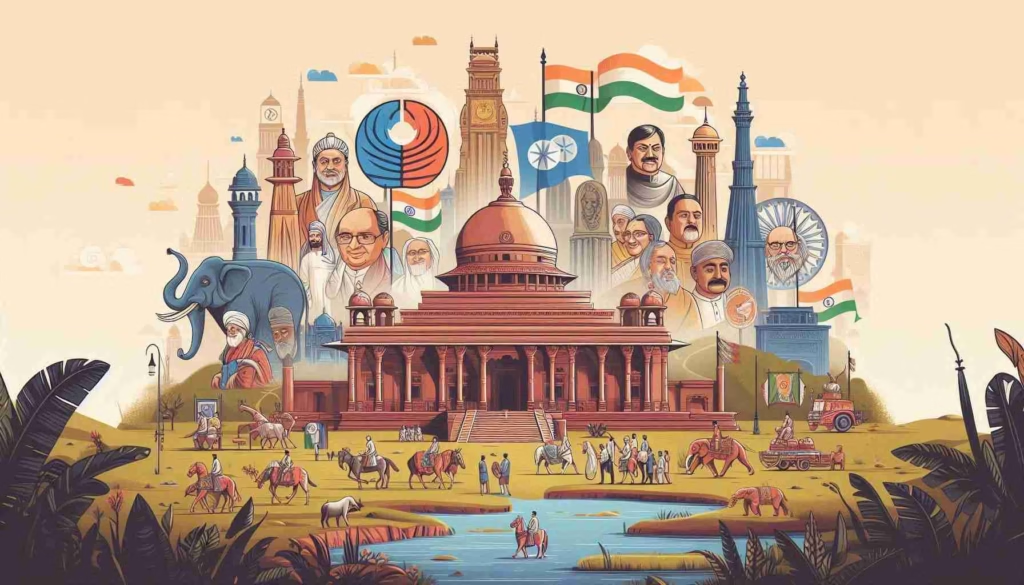
MCQs On Political Parties Class 10 Block 2: MCQs 26–50
- What comparison does help understand the necessity of political parties?
a) Comparing democracies to non-democracies.
b) Comparing one-party systems to multiparty systems.
c) Imagining a situation without parties, where every candidate is independent.
d) Comparing parties to pressure groups. - In a hypothetical situation without political parties, as described in the source, what promise would candidates be unable to make to the people?
a) Promises about local development.
b) Promises about their personal integrity.
c) Promises about any major policy changes.
d) Promises about contesting elections. - Non-party based elections at the panchayat level in many states. What is generally noticed in villages during these elections, even without formal parties?
a) Complete unity among all villagers.
b) Candidates make promises about major policy changes.
c) The village gets split into factions, each putting up a ‘panel’ of candidates.
d) Only one candidate contests from the village. - The phenomenon observed in non-party based panchayat elections (villages splitting into factions/panels) is exactly what parties do. True or False?
a) False
b) True - The rise of political parties is directly linked to the emergence of what kind of political system?
a) One-party systems
b) Two-party systems
c) Multiparty systems
d) Representative democracies - As societies became large and complex, they needed agencies to gather different views and present them to the government. What else did they need a mechanism for?
a) To prevent social divisions.
b) To ensure every citizen participates in politics.
c) To bring various representatives together to form a responsible government.
d) To select candidates for elections. - Parties fulfil needs that every representative government has, such as supporting or restraining the government, making policies, and justifying or opposing them. Therefore, parties are what for a democracy?
a) A visible institution
b) A source of criticism
c) A necessary condition
d) A group of people - According to the source, in a democracy, what is any group of citizens free to do in a formal sense?
a) Form a government
b) Debate laws
c) Criticise political parties
d) Form a political party - How many parties are registered with the Election Commission of India, according to the source?
a) Only a handful
b) Exactly 7
c) Exactly 6
d) More than 750 - Out of the large number of registered parties in India, how many are usually serious contenders in elections?
a) All of them are serious contenders
b) Only the recognised national parties
c) Only a handful of parties
d) More than 750 parties - What is a one-party system?
a) A system where only one party contests elections
b) A system where only one party is allowed to control and run the government
c) A system where one party always wins elections
d) A system where citizens can only be members of one party - Which country is given as an example of a one-party system in the source?
a) India
b) USA
c) UK
d) China - Can a one-party system be considered a good option according to the source?
a) Yes, because it ensures stability
b) Yes, if the party is popular
c) No, because it is not a democratic option
d) Yes, if the electoral system allows free competition - What must any democratic system allow regarding the number of parties?
a) Only one party to rule
b) At least two parties to compete in elections and have a fair chance to come to power
c) More than 750 parties to register
d) Only recognised parties to contest - What is a two-party system?
a) A system with exactly two registered parties
b) A system where only two parties contest elections
c) A system where power usually changes between two main parties
d) A system where only two alliances exist - Which countries are given as examples of a two-party system in the source?
a) India and China
b) The United States of America and the United Kingdom
c) China and USA
d) India and UK - What is a multiparty system?
a) A system with only recognised parties
b) A system where only two main parties exist
c) A system where parties always form governments on their own strength
d) A system where several parties compete for power, and more than two parties have a reasonable chance of coming to power - Which country is given as an example of a multiparty system in the source?
a) USA
b) UK
c) China
d) India - In a multiparty system, how is the government often formed?
a) By a single party winning a majority
b) By the two main parties alternating power
c) By various parties coming together in a coalition
d) By independent candidates - When several parties in a multi-party system join hands for the purpose of contesting elections and winning power, what is it called?
a) A coalition
b) A government
c) An alliance or a front
d) An opposition - Which of the following was NOT an example of a major alliance in the 2004 Indian parliamentary elections mentioned in the source?
a) The National Democratic Alliance
b) The United Progressive Alliance
c) The Left Front
d) The Bharatiya Janata Party - What is a potential negative consequence of a multiparty system mentioned in the source?
a) Lack of political representation for different interests
b) Difficulty in forming alliances
c) It often appears very messy and leads to political instability.
d) Power usually changes between two main parties - What is a positive aspect of a multiparty system mentioned in the source?
a) It prevents social divisions
b) It ensures stability
c) It is ideal for all countries
d) It allows a variety of interests and opinions to enjoy political representation. - Asking which party system is “better” (one-party, two-party, or multiparty) is not a very good question. Why?
a) Because citizens are indifferent to political parties.
b) Because there are more than 750 parties registered.
c) Because all party systems are equally effective.
d) Because the party system evolves depending on the nature of society, divisions, history, and electoral system, and is not something a country can simply choose. - Why has India evolved a multiparty system, according to the source?
a) Because it allows for political instability.
b) To allow more than 750 parties to register.
c) To reflect the views of only two main parties.
d) Because the social and geographical diversity in such a large country is not easily absorbed by two or even three parties.
MCQs On Political Parties Class 10 Answers Block 2 (Questions 26–50)
| Q No. | Answer | Q No. | Answer | Q No. | Answer | Q No. | Answer | Q No. | Answer |
|---|---|---|---|---|---|---|---|---|---|
| 26 | c | 31 | d | 36 | b | 41 | b | 46 | d |
| 27 | c | 32 | c | 37 | d | 42 | d | 47 | c |
| 28 | b | 33 | c | 38 | c | 43 | d | 48 | d |
| 29 | d | 34 | d | 39 | b | 44 | c | 49 | d |
| 30 | c | 35 | c | 40 | c | 45 | c | 50 | d |
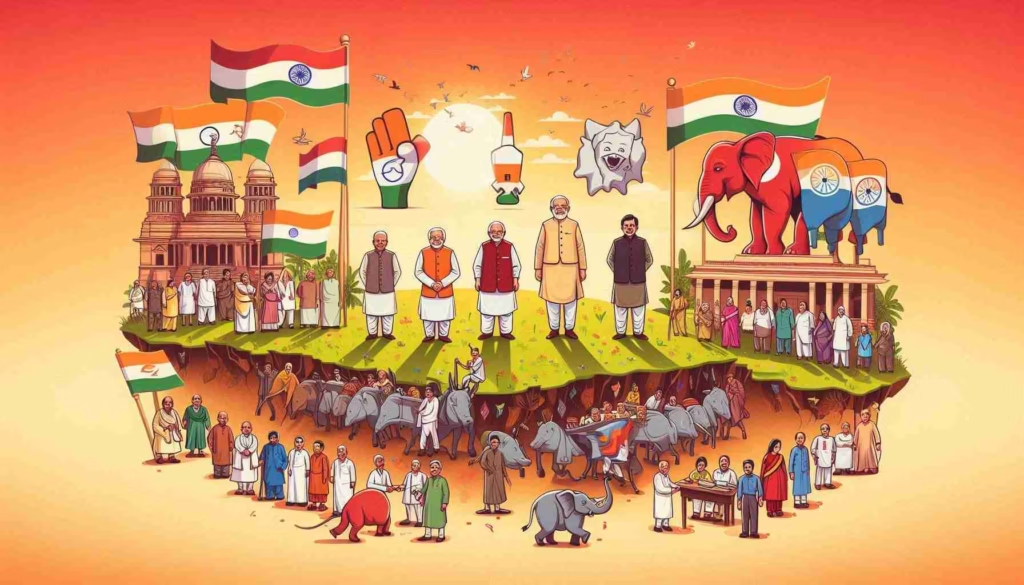
MCQs On Political Parties Class 10 Political Parties (51-75)
- Political parties are facing a crisis. What is a common belief about this crisis mentioned?
a) That parties are too popular.
b) That parties are too effective.
c) That they are very unpopular and citizens are indifferent to them.
d) That they have too much internal democracy. - Is the belief that political parties are unpopular and citizens are indifferent entirely true for India, according to the available evidence in the source?
a) Yes, entirely true.
b) No, it is entirely false.
c) No, it is only partly true.
d) None of the above - According to large sample surveys mentioned in the source, how does the trust in political parties in South Asia compare to distrust?
a) Trust is higher than distrust.
b) Trust and distrust are equal.
c) The proportion of those who say their trust is ‘not much’ or ‘not at all’ is more than those who have ‘some’ or ‘great’ trust.
d) None of the above - How do political parties rank among institutions in terms of trust levels globally, according to the chapter ‘outcomes of democracy’?
a) They are the most trusted institutions.
b) They are moderately trusted.
c) They are one of the least trusted institutions all over the world.
d) The chapter only discusses trust in South Asia. - How does the level of participation in the activities of political parties in India compare to many advanced countries like Canada, Japan, Spain, and South Korea, according to the source?
a) It is lower in India.
b) It is about the same.
c) It is higher in India.
d) There is no comparision on India to other countries. - What trend has been observed over the last three decades regarding the proportion of people in India who report being members of political parties?
a) It has gone down steadily.
b) It has remained constant.
c) It has gone up steadily.
d) none of the above - What trend has been observed over the last three decades regarding the proportion of people in India who feel ‘close to a political party’?
a) It has gone down.
b) It has remained unchanged.
c) It has also gone up in this period.
d) None of the abovce. - In democracies that follow a federal system, what two kinds of political parties tend to exist?
a) Ruling parties and opposition parties.
b) National parties and alliance parties.
c) Parties present in only one federal unit and parties present in several or all units.
d) Parties that contest elections and parties that don’t. - What are country-wide parties in India called, according to the source?
a) State parties
b) Regional parties
c) Alliance parties
d) National parties - National parties in India have units in various states. By and large, do these units follow different policies and strategies, or the same ones?
a) They follow different policies based on the state.
b) They follow local leadership direction.
c) They follow the same policies, programmes, and strategy decided at the national level.
d) None of the above. - Every party in India must register with which body?
a) The Supreme Court
b) The Government
c) The Legislature
d) The Election Commission - While the Election Commission treats all parties equally, what does it offer to large and established parties?
a) More state funding.
b) Exemption from internal elections.
c) Some special facilities and recognition.
d) Exemption from registering. - What is a key special facility offered to recognised parties by the Election Commission?
a) The ability to form a coalition government.
b) A minimum number of tickets for women.
c) State funding for elections.
d) A unique election symbol that only official candidates can use. - What are parties that receive special privileges and facilities from the Election Commission for this purpose called?
a) National parties
b) State parties
c) Recognised political parties
d) Registered parties - What criteria has the Election Commission laid down for a party to be recognised?
a) Popularity and trust among citizens.
b) The number of leaders and active members.
c) Detailed criteria of the proportion of votes and seats a party must get.
d) The ability to form alliances. - What is the criterion for a party to be recognised as a State party, according to the source?
a) At least six per cent of total votes in Lok Sabha elections.
b) Winning at least four seats in the Lok Sabha.
c) Securing at least six per cent of the total votes in an election to the Legislative Assembly of a State and winning at least two seats.
d) Having units in various states. - What is the criterion for a party to be recognised as a national party, according to the source?
a) Securing at least six per cent of the total votes in a State Assembly election.
b) Winning at least two seats in a State Legislative Assembly.
c) Securing at least six per cent of the total votes in Lok Sabha elections or Assembly elections in four States and winning at least four seats in the Lok Sabha.
d) Being present in all federal units. - How many recognized national parties were there in India as per the Election Commission notification of 2023
a) Seven
b) Six
c) More than 750
d) A handful - The Aam Aadmi Party (AAP) was formed following which movement?
a) The socialist movement.
b) The freedom struggle.
c) The dalit and oppressed people’s movement.
d) The 2011 anti-corruption movement. - What are the founding ideas of the Aam Aadmi Party (AAP)?
a) Marxism-Leninism.
b) Cultural nationalism.
c) Secularism and welfare of weaker sections.
d) Accountability, clean administration, transparency, and good governance. - After its formation, AAP emerged as the second largest party in which state/UT’s legislative assembly election?
a) Punjab
b) Gujarat
c) Delhi
d) Uttar Pradesh - With whose support did AAP form a government in Delhi in the year after its formation?
a) Bharatiya Janata Party (BJP).
b) Bahujan Samaj Party (BSP).
c) Indian National Congress (INC).
d) Communist Party of India – Marxist (CPI-M). - In which two states did AAP form governments recently, according to the source?
a) Delhi and Gujarat.
b) Punjab and Uttar Pradesh.
c) Gujarat and Punjab.
d) Punjab and Delhi. - How many seats did AAP secure in the 2019 Lok Sabha election?
a) Four
b) One
c) Ten
d) Fifty-two - The Bahujan Samaj Party (BSP) was formed under the leadership of whom?
a) Sahu Maharaj.
b) Mahatma Phule.
c) Babasaheb Ambedkar.
d) Kanshi Ram.
MCQs On Political Parties Class 10 Answers Table for Block 3 (Questions 51-75)
| Q No. | Answer | Q No. | Answer | Q No. | Answer | Q No. | Answer | Q No. | Answer |
|---|---|---|---|---|---|---|---|---|---|
| 51 | c | 56 | c | 61 | d | 66 | c | 71 | c |
| 52 | c | 57 | c | 62 | c | 67 | c | 72 | c |
| 53 | c | 58 | c | 63 | d | 68 | b | 73 | d |
| 54 | c | 59 | d | 64 | c | 69 | d | 74 | a |
| 55 | c | 60 | c | 65 | c | 70 | d | 75 | d |
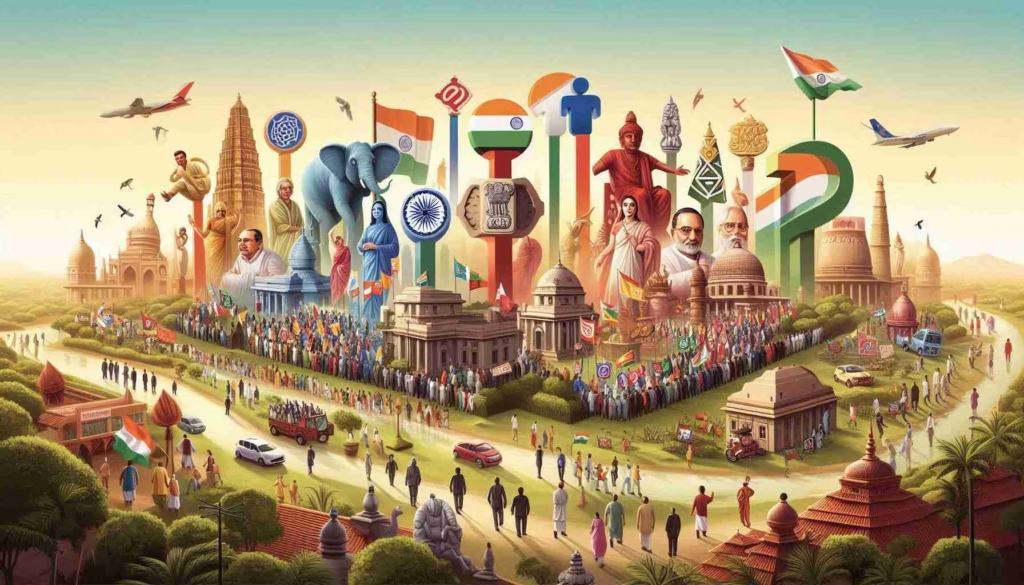
MCQs On Political Parties Class 10 Block 4 : 76-100
76. The Bahujan Samaj Party (BSP) seeks to represent and secure power for which group?
a) Upper castes and religious minorities
b) Factory workers and farmers
c) The bahujan samaj, including dalits, adivasis, OBCs, and religious minorities
d) The intelligentsia
77. From whose ideas and teachings does the BSP draw inspiration?
a) Jawaharlal Nehru
b) Syama Prasad Mukherjee
c) Kanshi Ram
d) Sahu Maharaj, Mahatma Phule, Periyar Ramaswami Naicker, and Babasaheb Ambedkar
78. What cause does the BSP stand for?
a) Cultural nationalism
b) Socialism and secularism
c) Securing the interests and welfare of the dalits and oppressed people
d) Accountability and good governance
79. Where is the main base of the Bahujan Samaj Party (BSP)?
a) Punjab and Delhi
b) Madhya Pradesh and Chhattisgarh
c) Uttar Pradesh
d) West Bengal
80. How many seats did BSP secure in the 2019 Lok Sabha elections?
a) 3
b) 1
c) 52
d) 10
81. When was the Bharatiya Janata Party (BJP) founded?
a) 1951
b) 1885
c) 1964
d) 1980
82. The BJP was founded by reviving which erstwhile party?
a) The Congress Party
b) The Communist Party of India
c) The Bharatiya Jana Sangh
d) The National Democratic Alliance
83. Who formed the Bharatiya Jana Sangh in 1951?
a) Deendayal Upadhyaya
b) Kanshi Ram
c) P.A Sangma
d) Syama Prasad Mukherjee
84. What is the BJP’s goal for India, drawing inspiration from ancient culture, values, and Deendayal Upadhyaya’s ideas?
a) To establish a one-party system
b) To promote socialism
c) To build a strong and modern India
d) To secure interests of oppressed people
85. What is an important element in the BJP’s conception of Indian nationhood and politics?
a) Secularism
b) Marxism-Leninism
c) Cultural nationalism (or ‘Hindutva’)
d) Alliance politics
86. Which of the following is a key policy position of the BJP mentioned in the source?
a) Support for new economic policies allowing free flow of foreign capital
b) Welfare of weaker sections and minorities
c) Opposition to imperialism and communalism
d) Full territorial and political integration of Jammu and Kashmir with India
87. How did the BJP’s support base change in the 1990s?
a) It declined substantially
b) It remained limited to urban areas
c) It shifted completely to the south and east
d) It increased substantially and expanded to the south, east, north-east, and rural areas
88. In 1998, the BJP came to power as the leader of which alliance?
a) The United Progressive Alliance (UPA)
b) The Left Front
c) The National Democratic Alliance (NDA)
d) The Mahagathbandhan
89. How many members did the BJP have in the 2019 Lok Sabha elections, emerging as the largest party?
a) 10
b) 52
c) 303
d) 1
90. Which party currently leads the ruling NDA government at the Centre?
a) Indian National Congress (INC)
b) Bahujan Samaj Party (BSP)
c) Bharatiya Janata Party (BJP)
d) National People’s Party (NPP)
91. When was the Communist Party of India – Marxist (CPI-M) founded?
a) 1885
b) 1980
c) 1964
d) 2012
92. What ideology does the CPI-M believe in?
a) Integral humanism
b) Cultural nationalism
c) Marxism-Leninism
d) Good governance
93. Which principles does the CPI-M support?
a) Communalism and imperialism
b) Capitalism and free markets
c) Socialism, secularism, and democracy
d) Dynastic succession
94. How does the CPI-M view democratic elections?
a) They oppose them
b) They see them as useless
c) They accept them as a useful and helpful means for securing socio-economic justice
d) They only participate if state funding is provided
95. Where does the CPI-M enjoy strong support, especially among the poor, factory workers, farmers, agricultural labourers, and intelligentsia?
a) Uttar Pradesh and Punjab
b) Madhya Pradesh and Chhattisgarh
c) West Bengal, Kerala, and Tripura
d) Delhi and Gujarat
96. What is the CPI-M critical of?
a) Alliance politics
b) Dynastic succession
c) Lack of internal democracy
d) The new economic policies that allow free flow of foreign capital and goods into the country
97. For how many years was the CPI-M in power in West Bengal without a break?
a) 10 years
b) 19 years
c) 34 years
d) Since 1964
98. How many seats did the CPI-M win in the 2019 Lok Sabha elections?
a) 10
b) 52
c) 1
d) 3
99. When was the Indian National Congress (INC) founded?
a) 1980
b) 1964
c) 1885
d) 2012
100. What role did the INC play in Indian politics for several decades after Independence, according to the source?
a) It was the main opposition party
b) It only succeeded in some states
c) It played a dominant role at the national and state level
d) It led national level coalition governments since 1996
MCQs On Political Parties Class 10 Answers for Block 4 (MCQs 76-100)
| Q No. | Answer | Q No. | Answer |
|---|---|---|---|
| 76 | c | 86 | d |
| 77 | d | 87 | d |
| 78 | c | 88 | c |
| 79 | c | 89 | c |
| 80 | b | 90 | c |
| 81 | d | 91 | c |
| 82 | c | 92 | c |
| 83 | d | 93 | c |
| 84 | c | 94 | c |
| 85 | c | 95 | c |
| 96 | d | ||
| 97 | c | ||
| 98 | c | ||
| 99 | c | ||
| 100 | c |
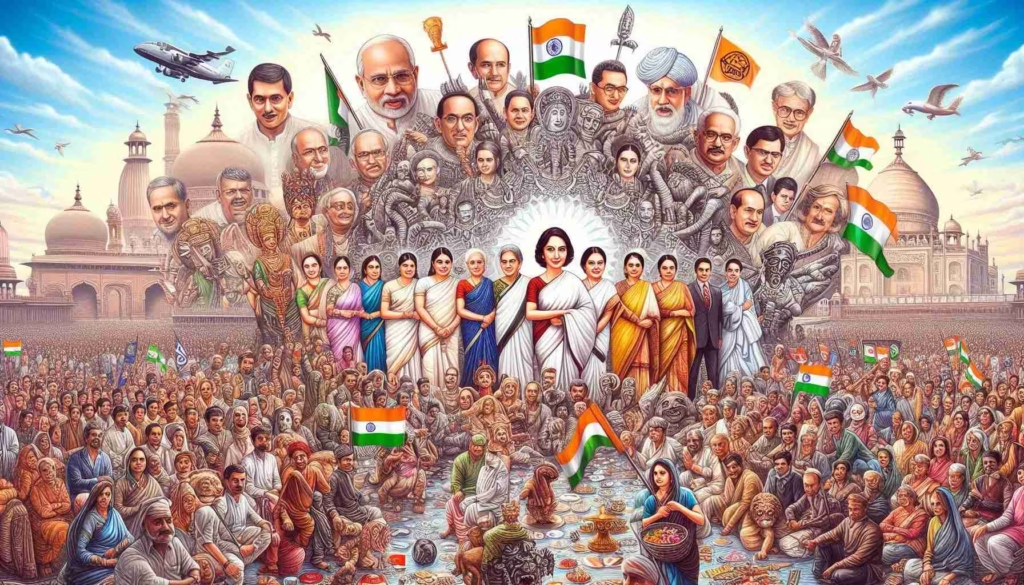
MCQs On Political Parties Class 10 Block 5: MCQs 101-125
101. Under whose leadership did the INC seek to build a modern secular democratic republic in India?
a) Mahatma Gandhi
b) Sardar Patel
c) Jawaharlal Nehru
d) Indira Gandhi
102. For what period was the INC the ruling party at the centre after 1977?
a) From 1977 to 1980
b) From 1989 onwards
c) From 2004 to 2019
d) From 1980 to 1989
103. How did the INC’s support change after 1989?
a) It increased substantially
b) It became limited to north and west India
c) Its support declined
d) It became dominant at the national level again
104. The INC is described as a centrist party in its ideological orientation. What principles does it espouse?
a) Cultural nationalism
b) Marxism-Leninism
c) Opposition to new economic reforms
d) Secularism and welfare of weaker sections and minorities
105. What is the INC’s stance on new economic reforms?
a) They oppose them entirely
b) They support them unconditionally
c) They support new economic reforms but with a human face
d) They advocate for free flow of foreign capital
106. Which alliance government did the INC lead from 2004 to 2019?
a) The National Democratic Alliance (NDA)
b) The Left Front
c) The United Progressive Alliance (UPA)
d) Nagarik Shakti
107. How many seats did the INC win in the 2019 Lok Sabha election?
a) 303
b) 10
c) 3
d) 52
108. When was the National People’s Party (NPP) formed?
a) 1984
b) 1980
c) 1885
d) July 2013
109. Under whose leadership was the NPP formed?
a) Kanshi Ram
b) Syama Prasad Mukherjee
c) Jawaharlal Nehru
d) P.A Sangma
110. What significant status did the NPP attain, being the first from North East India to do so?
a) Leading a national level coalition government
b) Forming a government in Meghalaya
c) Attaining the status of a national party
d) Winning a seat in the Lok Sabha
111. What is the core philosophy of the NPP?
a) Marxism-Leninism
b) Cultural nationalism
c) Secularism and welfare of minorities
d) Education and employment to all as well as empowerment of all sections of society
112. Where has the NPP formed a government and maintained presence?
a) Uttar Pradesh and Punjab
b) West Bengal and Kerala
c) Delhi and Punjab
d) Meghalaya and many of North Eastern States
113. How many seats did the NPP secure in the 2019 Lok Sabha election?
a) 52
b) 3
c) 10
d) One
114. Other than the seven parties mentioned, how does the Election Commission classify most major parties in India?
a) National parties
b) Recognised parties
c) State parties
d) Alliance partners
115. What are State parties commonly referred to as?
a) National parties
b) Ruling parties
c) Opposition parties
d) Regional parties
116. Do State parties necessarily have to be regional in their ideology or outlook?
a) Yes, always
b) No, they are always national in outlook
c) No, some are all India parties that succeeded only in some states
d) None of the above
117. Which two parties are given as examples of all India parties with national level political organisation and units in several states, but classified as State parties?
a) Biju Janata Dal and Sikkim Democratic Front
b) Mizo National Front and Telangana Rashtra Samithi
c) Bharatiya Janata Party and Indian National Congress
d) Samajwadi Party and Rashtriya Janata Dal
118. Over the last three decades, what has happened to the number and strength of State parties?
a) They have declined
b) They have remained constant
c) They have expanded
d) They have merged into national parties
119. How has the expansion of State parties affected the Parliament of India?
a) It has become less diverse
b) It has become dominated by two main parties
c) It has become more unified
d) It has become politically more and more diverse
120. What has been a consequence of no single national party securing a majority in the Lok Sabha, prior to 2014?
a) State parties disappeared
b) Two-party system emerged
c) National parties were compelled to form alliances with State parties
d) One-party rule was established
121. Since 1996, what opportunity has nearly every State party had?
a) To become a national party
b) To form a government on its own
c) To be a part of one or the other national level coalition government
d) To contest elections independently
122. How has the increased role of State parties in national coalitions contributed to the country?
a) It has led to political instability
b) It has reduced diversity in Parliament
c) It has weakened the federal system
d) It has contributed to the strengthening of federalism and democracy
123. What is the first challenge to political parties mentioned in the source?
a) Dynastic succession
b) Money and muscle power
c) Lack of meaningful choice
d) Lack of internal democracy within parties
124. What is a tendency observed in political parties worldwide regarding power?
a) Power is decentralised among members
b) Power is shared equally among leaders
c) Tendency towards the concentration of power in one or a few leaders at the top
d) Power rests with independent authorities
125. Which of the following practices is listed as a sign of lack of internal democracy within parties?
a) Holding regular internal elections
b) Maintaining membership registers
c) Providing sufficient information to ordinary members
d) Not holding organisational meetings regularly
MCQs On Political Parties Class 10 Answers to Block 5 (101-125)
| Q No. | Answer |
|---|---|
| 101 | c |
| 102 | c |
| 103 | c |
| 104 | d |
| 105 | c |
| 106 | c |
| 107 | d |
| 108 | d |
| 109 | d |
| 110 | c |
| 111 | d |
| 112 | d |
| 113 | d |
| 114 | c |
| 115 | d |
| 116 | c |
| 117 | d |
| 118 | c |
| 119 | d |
| 120 | c |
| 121 | c |
| 122 | d |
| 123 | d |
| 124 | c |
| 125 | d |
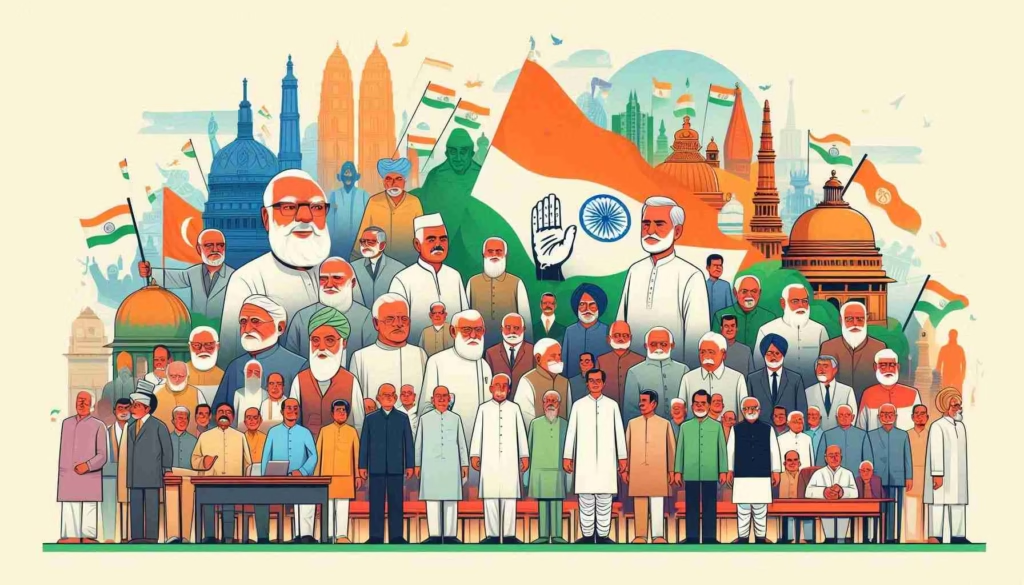
MCQs On Political Parties Class 10 Block 6: MCQs 126-150
- When power is concentrated in a few top leaders, what happens to ordinary party members who disagree with the leadership?
a) They can easily influence decisions.
b) They are promoted to higher posts.
c) They find it difficult to continue in the party.
d) Their opinions are prioritised. - What becomes more important than loyalty to party principles and policies when one or few leaders exercise paramount power?
a) Public opinion.
b) Electoral success.
c) Personal loyalty to the leader.
d) Internal democracy. - What is the second challenge of dynastic succession related to?
a) Money and muscle power.
b) Lack of meaningful choice.
c) State funding of elections.
d) Lack of internal democracy within parties. - Why is it difficult for an ordinary worker to rise to the top in many political parties, according to the source?
a) Because parties always give tickets to women.
b) Because there is state funding of elections.
c) Because most parties do not practice open and transparent procedures for their functioning.
d) Because leaders are always experienced. - In many parties, the top positions are controlled by members of one family. Why is this considered bad for democracy?
a) Because it makes it difficult to form coalitions.
b) Because it increases the role of money.
c) Because people without adequate experience or popular support occupy positions of power.
d) Because it leads to lack of internal democracy. - What is the third challenge faced by political parties, especially during elections?
a) Lack of internal democracy.
b) Dynastic succession.
c) Lack of meaningful choice.
d) The growing role of money and muscle power. - Why do parties focused on winning elections tend to use short-cuts?
a) To promote internal democracy.
b) To represent diverse interests.
c) To win elections.
d) To implement their policies. - Parties tend to nominate candidates who have or can raise lots of money. Who tends to have influence on party policies and decisions as a result of giving funds?
a) Ordinary members.
b) The opposition.
c) State election authorities.
d) Rich people and companies. - What are democrats around the world worried about regarding politics?
a) The declining role of parties.
b) The strengthening of federalism.
c) The increasing role of rich people and big companies.
d) The lack of political representation. - What is the fourth challenge mentioned for political parties?
a) Lack of internal democracy.
b) Dynastic succession.
c) The growing role of money and muscle power.
d) Very often parties do not seem to offer a meaningful choice to the voters. - For parties to offer a meaningful choice to voters, what must be true?
a) They must be very popular.
b) They must win elections.
c) They must be significantly different.
d) They must form coalitions. - What trend has been observed in recent years regarding ideological differences among parties in most parts of the world?
a) They have increased.
b) They have remained constant.
c) There has been a decline.
d) Parties have become more partisan. - How is the difference described between the Labour Party and the Conservative Party in Britain in recent years?
a) They are significantly different.
b) They have major ideological conflicts.
c) The difference is very little.
d) They agree on nothing. - In India, how have the differences among all the major parties on economic policies changed?
a) They have increased.
b) They have remained constant.
c) They are significantly different.
d) They have reduced. - If parties do not offer significantly different policies, what option is unavailable to voters who want really different policies?
a) The option to participate in party activities.
b) The option to join a party.
c) The option to vote for a different party.
d) The option available to them. - What is ‘Defection’?
a) Forming an alliance with another party.
b) Leading a coalition government.
c) Contesting elections as an independent candidate.
d) Changing party allegiance from the party on which a person got elected to a different party. - The Constitution was amended to prevent elected representatives from changing parties. Why was this done?
a) To increase internal democracy.
b) To provide state funding.
c) Because many elected representatives were indulging in defection for personal gain (ministers, cash rewards).
d) To ensure meaningful choice for voters. - What does the anti-defection law state regarding an MLA or MP who changes parties?
a) They will be promoted to a higher post.
b) They must pay a fine.
c) He or she will lose the seat in the legislature.
d) They must join the ruling party. - How has the new anti-defection law affected dissent within parties, according to the source?
a) It has made dissent easier.
b) It has promoted healthy debate.
c) It has had no effect on dissent.
d) It has made any dissent even more difficult, as MPs/MLAs have to accept party leadership decisions. - What order did the Supreme Court pass to reduce the influence of money and criminals in elections?
a) Banning wall writing by parties.
b) Mandating state funding of elections.
c) Making it mandatory for candidates to file an affidavit detailing property and criminal cases.
d) Regulating the internal affairs of parties. - What is an ‘Affidavit’?
a) A law regulating internal party affairs.
b) A unique election symbol.
c) A signed document submitted to an officer where a person makes a sworn statement regarding personal information.
d) A criterion for party recognition. - While the Supreme Court order on affidavits makes information public, what is missing, according to the source?
a) A requirement to declare assets.
b) A system to contest elections.
c) A system to check if the information given by candidates is true.
d) Details of criminal cases. - The Election Commission passed an order making it necessary for political parties to hold organisational elections and file income tax returns. What is noted about parties’ compliance with this order?
a) They have strictly followed the spirit of the order.
b) They have refused to comply.
c) They have started doing so, but sometimes it is mere formality.
d) This step has led to greater internal democracy. - Which of the following is a suggestion made for reforming political parties mentioned in the source?
a) Parties should avoid holding internal elections.
b) The government should ban all political parties.
c) There should be a ban on women candidates.
d) A law should be made to regulate the internal affairs of parties, including membership registers and open elections to high posts. - What are two other ways suggested for reforming political parties, besides legal solutions?
a) Increasing money and muscle power.
b) Reducing public participation.
c) Focusing only on winning elections.
d) People putting pressure on parties through petitions/publicity/agitations, and people who want reform joining political parties.
MCQs On Political Parties Class 10 Answers Table for Block 6
| Q No. | Answer |
|---|---|
| 126 | d |
| 127 | c |
| 128 | c |
| 129 | d |
| 130 | c |
| 131 | d |
| 132 | d |
| 133 | c |
| 134 | d |
| 135 | c |
| 136 | c |
| 137 | d |
| 138 | c |
| 139 | d |
| 140 | c |
| 141 | d |
| 142 | c |
| 143 | c |
| 144 | d |
| 145 | c |
| 146 | c |
| 147 | c |
| 148 | c |
| 149 | d |
| 150 | d |
